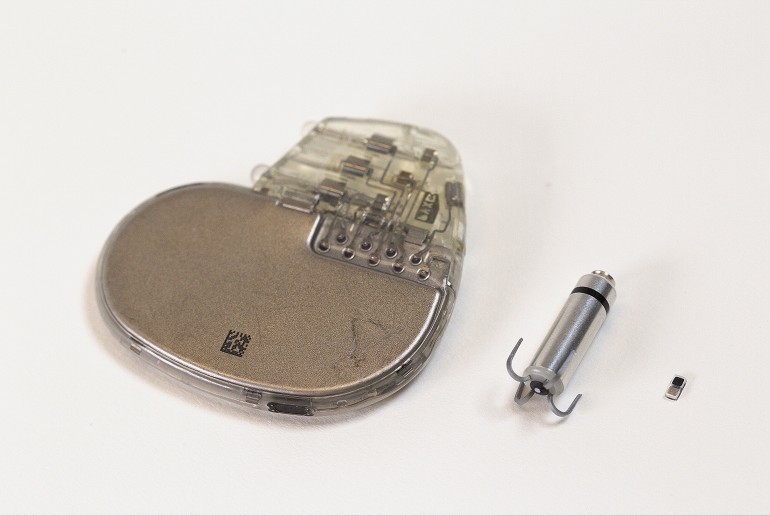The world’s smallest pacemaker

Imagine a pacemaker so small that it can be injected into the body with a syringe. It may sound like science fiction, but engineers at Northwestern University have turned this idea into reality. Designed for hearts of all sizes, this innovative device is especially beneficial for newborns with congenital heart conditions.
Smaller than a grain of rice, the pacemaker works in conjunction with a flexible, wireless wearable device attached to the patient’s chest. When it detects an irregular heartbeat, this tiny sensor emits a pulse of light that activates the pacemaker, regulating the heart’s rhythm. Without the need for wires or invasive procedures, this technology offers a revolutionary approach to medicine.
Designed for temporary use, the device naturally dissolves in the body when no longer needed, eliminating the need for surgical removal. All its components are biocompatible and simply disappear into bodily fluids.
Published in the journal Nature, the study demonstrated the pacemaker’s effectiveness in tests with animal models and human hearts from deceased donors. “We have developed what, to the best of our knowledge, is the world’s smallest pacemaker,” said John A. Rogers, a pioneer in bioelectronics and the project leader. According to him, miniaturization is essential, especially for young patients in pediatric cardiology.
Experimental cardiologist Igor Efimov, co-author of the study, highlighted the motivation behind the research: “Our greatest inspiration was children. About 1% of newborns have congenital heart defects. The good news is that most only need temporary pacemakers for a few days after surgery. And those days are critical. Now, we can implant a tiny device that does its job without requiring surgical removal.”
This work is an advancement over a previous study by the team, which in 2021 developed the first dissolvable temporary pacemaker. Traditionally, these devices were connected by external wires, posing risks such as infections, displacement, and heart tissue damage. Neil Armstrong, the legendary astronaut, passed away due to complications of this kind when his temporary pacemaker was removed.
To address this issue, the researchers developed a new design without wires or bulky batteries. The innovation was replacing radiofrequency communication with an infrared light activation system. This breakthrough enabled a drastic reduction in the device’s size, making it even less invasive.

The new version also utilizes a galvanic cell as its power source, where the interaction between metals and biological fluids generates electricity. “When the pacemaker is implanted, bodily fluids activate the internal battery, which then starts powering the device,” Rogers explained. An infrared light-activated switch allows the pacemaker to be turned on and off as needed, without surgical intervention.
The technology even enables the synchronization of multiple pacemakers within the heart, each activated by different wavelengths of light. This opens new possibilities for treating arrhythmias and even integrating with artificial heart valves.
“Because it is so small, this pacemaker can be incorporated into virtually any implantable device,” Rogers emphasized. “We have also demonstrated that it can be used in catheter-implanted aortic valve replacements, activating only when needed to prevent postoperative complications.”
Beyond cardiology, this technology has the potential to revolutionize other areas of bioelectronic medicine, such as nerve and bone stimulation, wound treatment, and even pain blocking. This tiny device not only represents a major leap in science but also offers hope for thousands of patients who need temporary cardiac stimulation without the risks associated with traditional methods.






